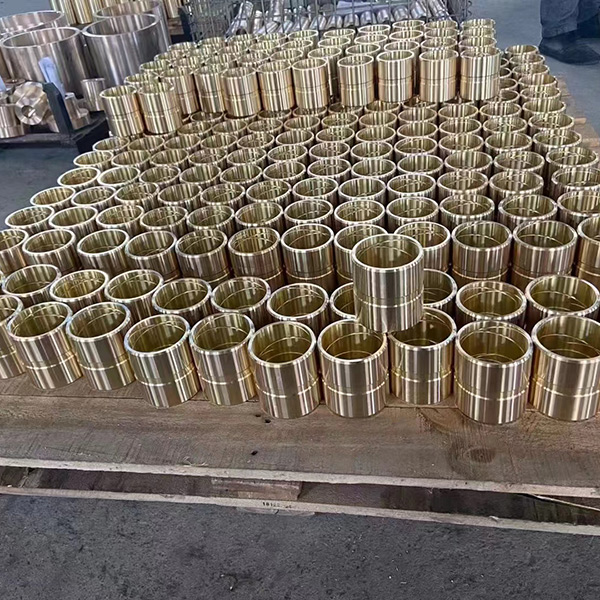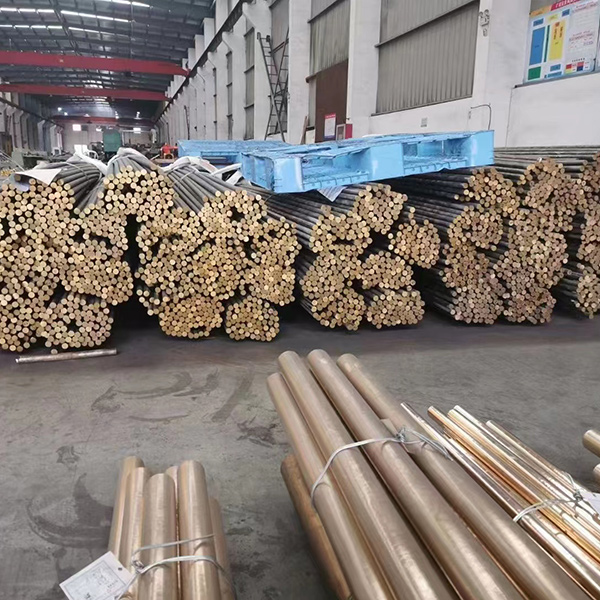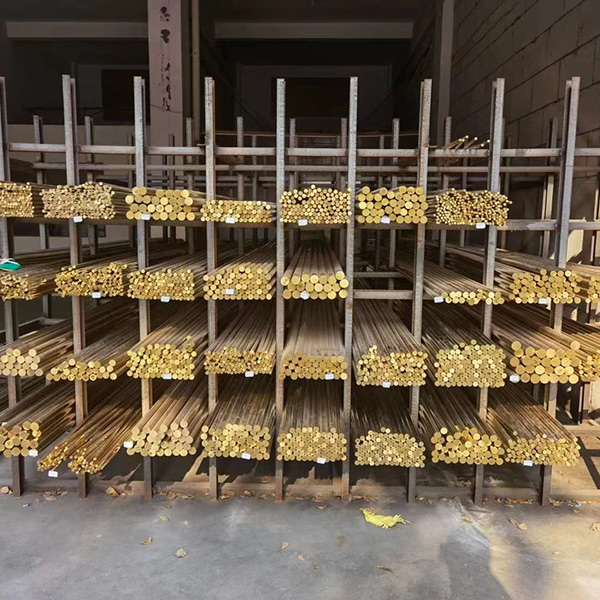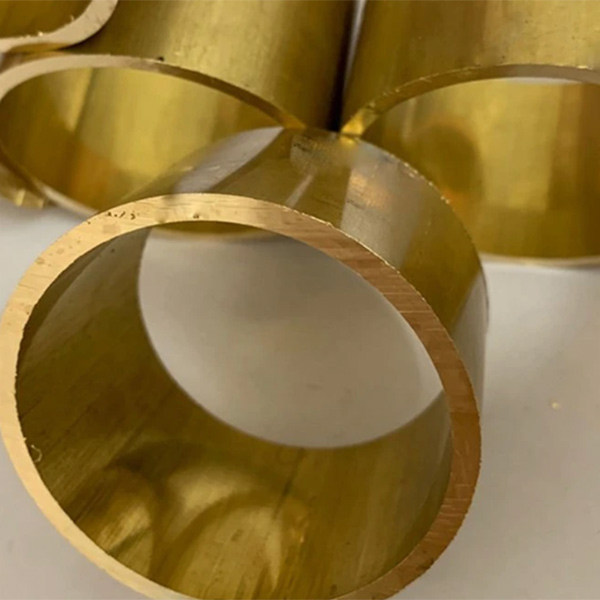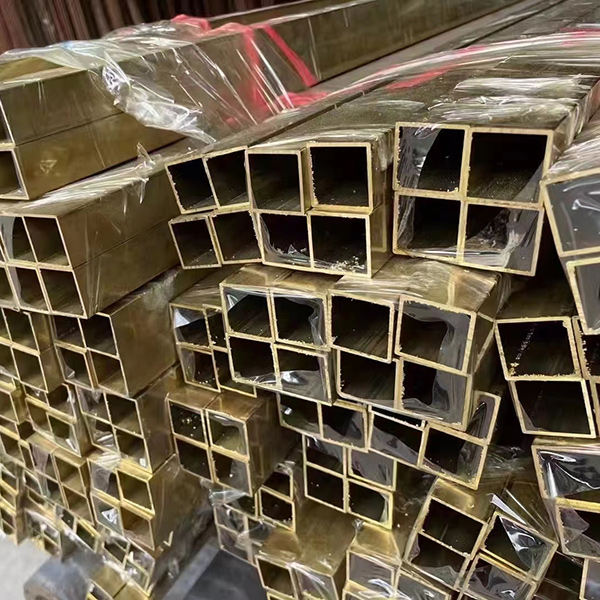C2680 brass tubes straight from the factory at premium prices
C2680 Brass Tube, A kind of non-ferrous metal tube, is pressed and drawn seamless tube. Copper pipe with strong, corrosion resistance characteristics, and become the modern contractor in all residential commercial housing water pipes, heating, refrigeration pipeline installation of the first choice. Brass pipes are the best water supply.
Video
C2680 Brass Tube, Features
C2680 Brass Tube,Light weight, good thermal conductivity, high low temperature strength. It is often used to manufacture heat transfer equipment (such as condenser, etc.). It is also used for assembling low-temperature pipelines in oxygen production equipment. Small diameter copper pipe is often used for conveying pressure liquid (such as lubrication system, oil pressure system, etc.) and used as instrument pressure tube, etc. Brass tubes are strong and resistant to corrosion.
Mainly has the following advantages: copper tube hard texture, not easy to corrosion, and high temperature resistance, high pressure resistance, can be used in a variety of not copper type environment. And compare with brass tube, the shortcoming of a lot of other pipe material is apparent, for instance in the past residence uses more galvanized steel tube, its rust is extremely easy, use time is not long can appear tap water hair yellow, current decrescent wait for a problem. There are also some materials in high temperature strength will quickly reduce, when used for hot water pipes will produce unsafe hidden dangers. But because copper has a melting point of 1,083 degrees, the temperature of the hot water system has little effect on brass tubes. Common brass tubes include electrical brass tube, refrigeration brass tube, high pressure brass tube, corrosion resistant brass tube, connection brass tube, waterway brass tube, electric heating brass tube and industrial brass tube.
The development history
So far, the earliest copper products found in the world are mainly in Western Asia, such as Iraq's Zawei Chemi region, found copper decorations, the age of about 10,000 BC to 9,000 BC; Copper ornaments have also been found in ali Kashi in western Iran, dating from 9,000 to 7,000 BC; Copper needles and cones have been found at the Site of Chayoni in southern Turkey, dating from around 8,000 BC. These copper products are natural red copper hit products, not through smelting ore copper.
From the use of pure copper, to smelting copper ore to pure copper, to smelting bronze alloy, mankind has experienced a long time of exploration, like the magic world of copper to build a glittering time tunnel bit by bit.
The earliest copper smelting in the world was found in Shaanxi, China. In 1973, a semicircular brass plate and a brass tube were found in the Jiangzhai Cultural site in Lintong, Shaanxi province, dating to about 4700 BC. Worth pointing out that light source in Shanghai recently, using X-ray fluorescence scanning analysis, found that the zinc content in different areas of the village of brass slices ginger have significant differences, and lead a scattered point distribution, its characteristics and solid state reduction method of brass are exactly the same, thus proving ancestors invented in use natural metal and metal casting are used when hot burnt or solid reduction smelting metal.
C2680 Brass Tube, The Main Classification
Leaded brass
Lead is actually insoluble in brass and distributes at grain boundaries as a free particle. Lead brass has α and (α+β) according to its structure. Alpha lead brass can only be cold deformed or hot extruded due to the large harmful effect of lead and low plasticity at high temperature. (α+β) lead brass has good ductility at high temperature and can be forged.
Tin brass
The addition of tin in brass can obviously improve the heat resistance of alloy, especially the ability to improve the corrosion resistance of seawater, so tin brass is called "navy brass".
Tin can be dissolved into copper - based solid solution to strengthen the solution. However, with the increase of tin content, there will be brittle R phase (CuZnSn compound) in the alloy, which is not conducive to the plastic deformation of the alloy, so the tin content of tin brass is generally in the range of 0.5% ~ 1.5%.
Commonly used tin brass hSN70-1, HSN62-1, HSN60-1 and so on. The former is a α alloy with high plasticity and can be processed by cold and hot pressure. The latter two kinds of alloy have (α+β) two-phase structure, and often a small amount of R phase, room temperature plasticity is not high, can only be deformed under hot state.
Manganese brass
Manganese has a greater solubility in solid brass. The strength and corrosion resistance of the alloy can be significantly improved without decreasing the ductility by adding 1% ~ 4% manganese into brass.
Manganese brass has (α+β) microstructure and hMN58-2 is commonly used. It has good pressure machining performance under cold and hot states.
Iron, brass
In iron brass, iron is precipitated by iron-rich particles as crystal nuclei to refine grains and prevent recrystallization grains from growing up, so as to improve the mechanical and technological properties of the alloy. Iron brass in the iron content is usually less than 1.5%, its structure is (α+β), with high strength and toughness, plasticity is very good at high temperature, cold state can also be deformed. The commonly used brand is HFE59-1-1.
Nickel silver
Nickel and copper can form continuous solid solution and enlarge α phase region significantly. The corrosion resistance of brass in air and sea water can be improved by adding nickel. Nickel can also increase the recrystallization temperature of brass and promote the formation of finer grains.
Hni65-5 nickel-brass has a single-phase α structure, which has good plasticity at room temperature and can be deformed at hot state. However, the content of lead impurity must be strictly controlled, or the hot working property of the alloy will be seriously deteriorated.
Chemical Composition(%)
| GB | JIS | Cu+Ag | P | Bi | Sb | As | Fe | Ni | Pb | Sn | S | Zn | O | |
| Refined Copper | T1 | C1020 | 99.95 | 0.001 | 0.001 | 0.002 | 0.002 | 0.005 | 0.002 | 0.003 | 0.002 | 0.005 | 0.005 | 0.02 |
| T2 | C1100 | 99.9 | - | 0.001 | 0.002 | 0.002 | 0.005 | - | 0.005 | - | 0.005 | - | - | |
| T3 | C1221 | 99.7 | - | 0.002 | - | - | - | - | 0.01 | - | - | - | - | |
| Oxygen Free Copper | TU0 | C1011 | 99.99 | 0.0003 | 0.0001 | 0.0004 | 0.0005 | 0.001 | 0.001 | 0.0005 | 0.0002 | 0.0015 | 0.0001 | 0.0005 |
| TU1 | C1020 | 99.97 | 0.002 | 0.001 | 0.002 | 0.002 | 0.004 | 0.002 | 0.003 | 0.002 | 0.004 | 0.003 | 0.002 | |
| TU2 | 99.95 | 0.002 | 0.001 | 0.002 | 0.002 | 0.004 | 0.002 | 0.004 | 0.002 | 0.004 | 0.003 | 0.003 |
Physical Properties
| Grade | Temper | Hardness(HV) | Tensile strength(Mpa) | Elongation(%) |
| C1000 C1200 C1220 etc. | Soft | <60<> | >205 | ≥40 |
| 1/4H | 55-100 | 217-275 | ≥35 | |
| 1/2H | 75-120 | 245-345 | ≥25 | |
| H | 105-175 | >295 | ≥13 |
Product Display
